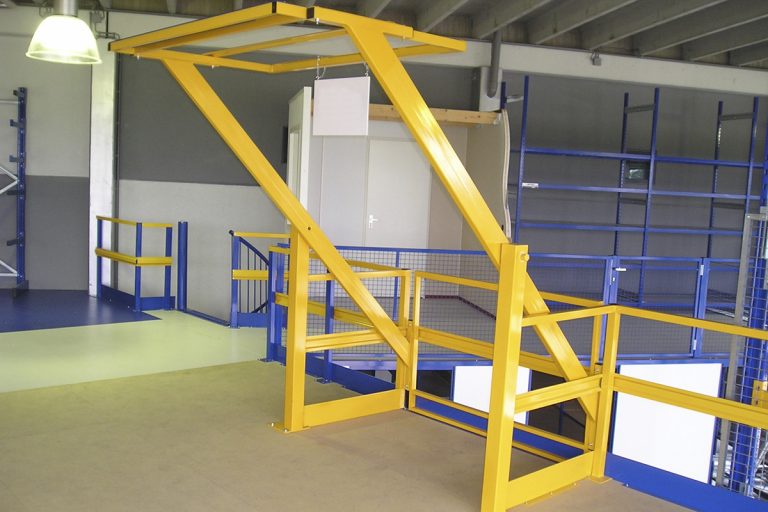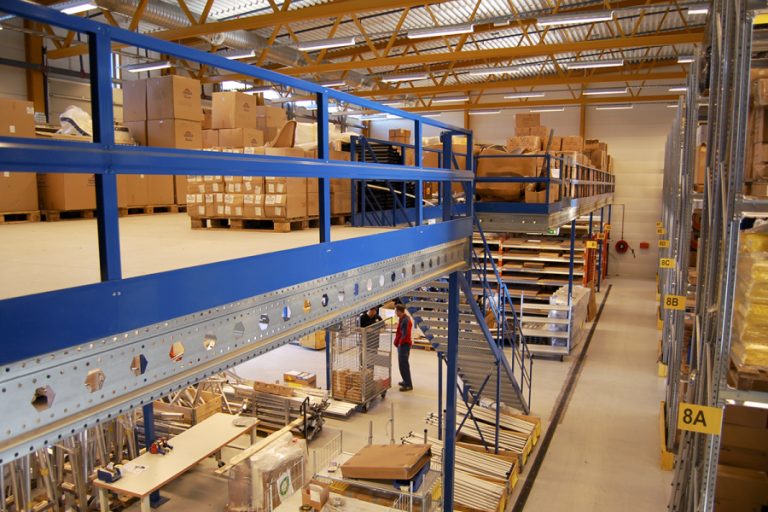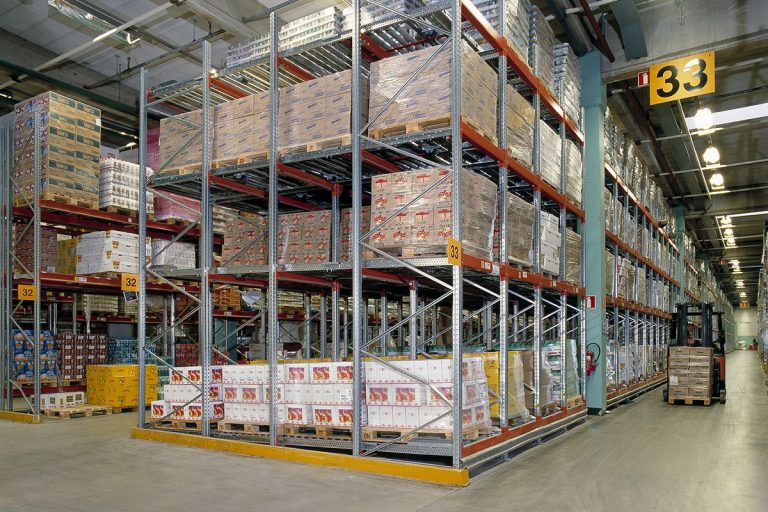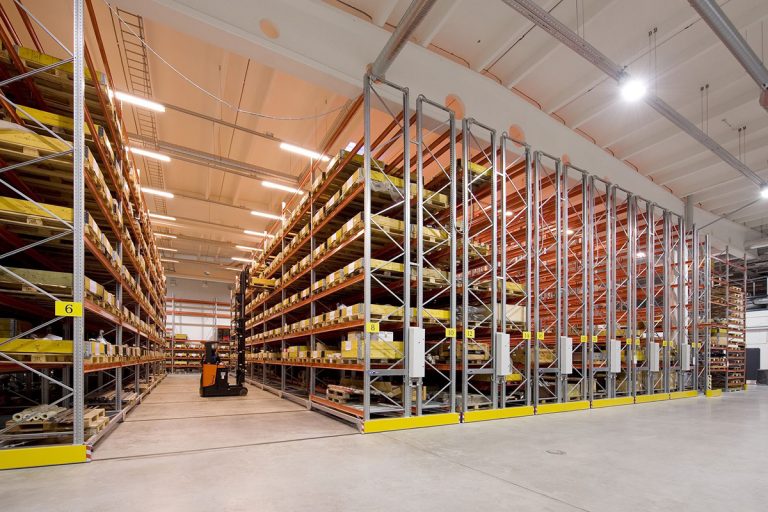Racking damage and repair
Once damage has been identified on a racking system, you should take action according to the SEMA traffic light code of practice.
Red Risk - Very serious damage requiring immediate action
Amber Risk - Hazardous damage requiring action as soon as possible
Green Risk - Requiring surveillance only
These levels of damage will be highlighted in your racking inspection, which you should have at least once every 12 months.
You should also ensure your in-house teams regularly inspect and monitor your storage systems to identify damage early.
Read more about racking safety inspections and UK legislation here.
What does a Red Risk on racking mean?
Red risks on racking are situations where a critical level of damage is identified. The area of racking should be immediately offloaded and isolated from future use.
The racking can be re-used when the necessary repair work is carried out and the system is re-inspected for safety. Such repair work would usually be by replacement of the damaged component.
You should have a method of isolating areas to ensure that they do not come back into use before the repair work is carried out. For example, a particular bay could be offloaded in the presence of the inspector and roped off to prevent further use.
What does an Amber Risk on racking mean?
An amber risk on racking would identify an area where the damage was sufficiently severe to warrant remedial work, but not so severe as to warrant the immediate offloading of the rack.
Once load is removed from a damaged component, the component should not be reloaded until repairs have been carried out.
You should have a method of isolating such racks to ensure they do not come back into use until the necessary racking repairs have been carried out. The equipment should then be certified as safe before the rack is reloaded.
You could also use dated racking damage report tags to indicate the racks are not to be used until repaired.
Any racking with an AMBER RISK category damage should be re-categorised as RED RISK if remedial work has not been carried out within four weeks of the original identification.
What does a Green Risk on racking mean?
Green level damage on racking indicates the rack does not need to be offloaded or repaired immediately. This category indicates the racking components are considered safe and serviceable.
Such components should be recorded as suitable for further service until the next management inspection. The components should be clearly identified for specific re-examination and reassessment at future inspections.
Exceeding the green level should be considered damage and causes risk to the racking system.
When do I need to repair racking damage?
Damage to racking needs to be prioritised in order of risk category.
Red risk damage should be first offloaded and segregated from being used. Repair work will need to be booked in as soon as possible before the racking can be reused.
Amber risk damage should be repaired within four weeks, otherwise the racking needs to be immediately offloaded and unused until repair work is carried out.
Green risk damage should be monitored for any deterioration at regular in house inspections. If there are any changes to the damage, the appropriate action should be taken depending on the new category of risk.
To find out more about common types of racking damage and what you should do about them, check out our maintenance and repairs page here.
Do your teams know what to look for on their regular in-house inspections? Ensure they have the skills and the knowledge to keep your warehouse safe and operational. Visit our training courses page here.
Has your recent inspection highlighted red and amber risk damage to your racking?
Send us your inspection report and we can quote for your repair work.
Latest News

The IWS Group Rebrand: One Group. One Mission.
A New Chapter for Rack Group: Stronger, Smarter, Safer We’re excited to announce the next chapter for Rack Group as part of the wider IWS Group rebrand. This refresh unifies all businesses within the group under a single vision, and Rack …

Optimising Warehouse Storage for RITS Logistics
Rack Group partnered with Rail Installation & Technical Services Ltd to design and install a tailored Link 51 pallet racking system, complete with Rack Armour® upright protection. The project maximised capacity, improved safety, and future-proofed their South West warehouse for growth.

Top 10 Racking Regulations for Warehouse Safety
Understanding and complying with racking regulations is essential for maintaining a safe, efficient and legally compliant warehouse. In this guide, Rack Group outlines the top 10 UK regulations every warehouse owner and site manager should know – helping you reduce risk, avoid costly damage, and protect your workforce.





















